Italian animation masterpiece: "L'ultimo Sciuscià"
"L'ultimo Sciuscià" is an italian cartoon produced in 1946 by Alfa Circus, an animation studio founded after the end of WWII by Gibba (pseudonym of Francesco Maurizio Guido), who also was the director of this short, which is remarkable because it represents the only example of an animated neorealistic film.
Gibba, who had formerly worked as an animator, for his first work as a cartoon director, attempted to produce a short that could differ from the rest of Italian animated productions of the time, which were specifically targeted to children, trying to show that animation was a medium that could address also to a more adult and wide audience. For his first cartoon, he got the inspiration from the neorealistic movies produced in Italy during the post-WWII period, characterized by the depiction of the most poor and difficult situations in Italy as a result of the tragedies of war. "L'ultimo Sciuscià" is the story of a little boy selling contraband cigarettes at street corners, constantly struggling against the difficulties of living a poor life. His only friend is his faithful little dog, Matteo, that represents a conjunction of this cartoon to the formula of many other cartoons, with a main character and his four-legged pal.
This cartoon constitutes a transition between the classic cartoony style and the more "mature" style that Gibba was trying to introduce in the animated medium, with an interesting alternation of humorous scenes and serious (and often sad) themes.
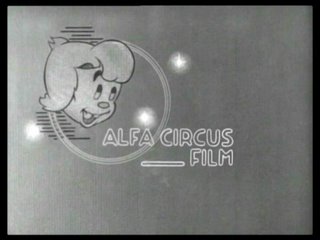
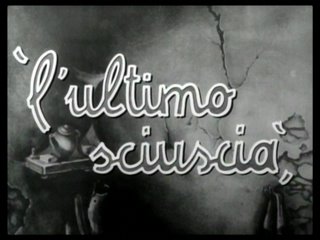
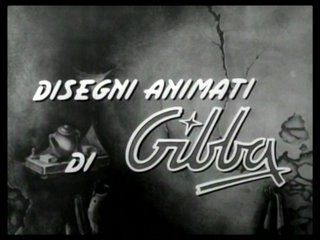
The cartoon opens with a card, reading "...this is the short story of a child whose only friends were a dog and the stars..."


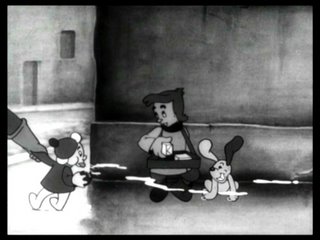



An American soldier and his Italian fiancé approach the child (by the way, the soldier's stereotyped voice, characterized by a fake American accent, was provided by Mauro Zambuto, the Italian voice of Stan Laurel).


 But when the American guy's about to pay for the cigar his vulgar-looking girlfriend has taken from our little hero, everybody tries to get away after a policeman is seen coming towards them.
But when the American guy's about to pay for the cigar his vulgar-looking girlfriend has taken from our little hero, everybody tries to get away after a policeman is seen coming towards them.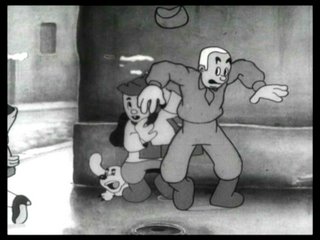
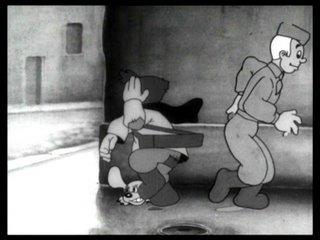


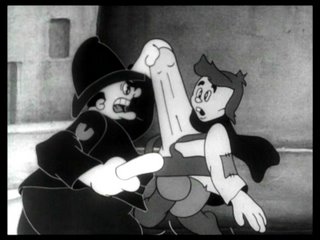

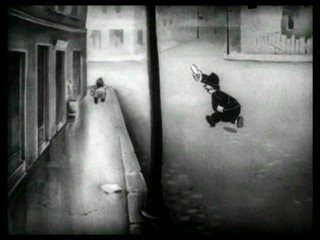
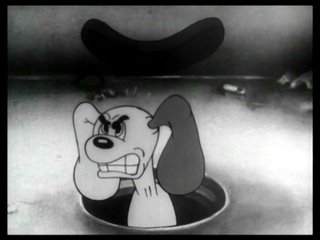





 The boy and his dog finally manage to escape on board of a streetcar.
The boy and his dog finally manage to escape on board of a streetcar.

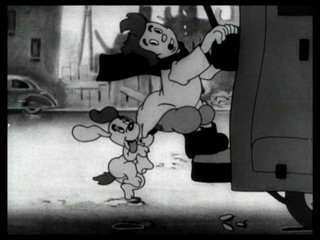




 Take a look at the great, funny animation of the silhouettes of the passengers:
Take a look at the great, funny animation of the silhouettes of the passengers:




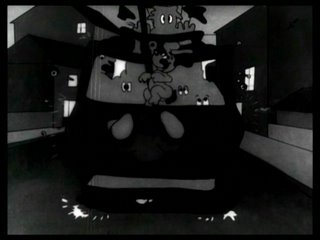
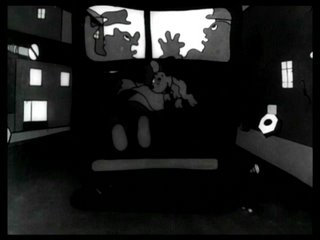

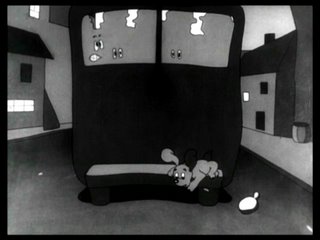




 In the evening, the boy comes home.
In the evening, the boy comes home.
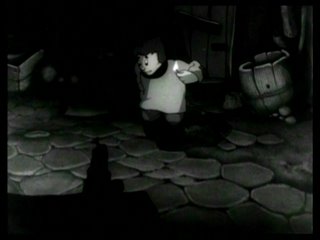

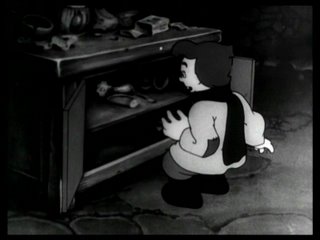
 This part of the cartoon has the funniest animation and is clearly inspired by American cartoons, featuring an anthropomorph rat fighting against the poor little dog, Matteo, all accompanied by a particularly inspired musical score by Costantino Ferri, which reminds me of the music heard in the Disney cartoons from the late '30s.
This part of the cartoon has the funniest animation and is clearly inspired by American cartoons, featuring an anthropomorph rat fighting against the poor little dog, Matteo, all accompanied by a particularly inspired musical score by Costantino Ferri, which reminds me of the music heard in the Disney cartoons from the late '30s.


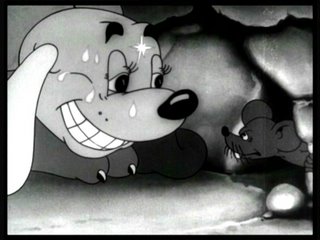






 As he falls asleep, we see now his dream sequence, where he is seen going up to the sky with a ladder.
As he falls asleep, we see now his dream sequence, where he is seen going up to the sky with a ladder.

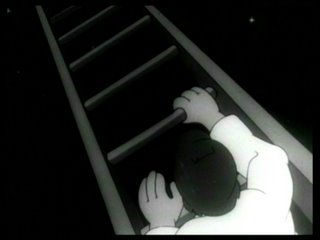

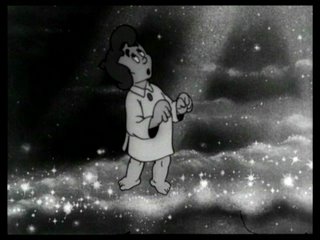
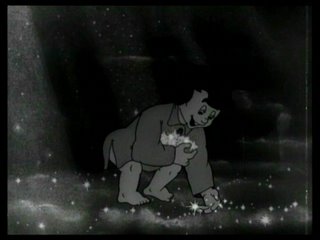
 He picks up some stars to take home, but when he's about to go away, a voice warns him: he can't take those stars away unless he stays up there forever.
He picks up some stars to take home, but when he's about to go away, a voice warns him: he can't take those stars away unless he stays up there forever. The boy, who has finally found a place where he can be happy, with tears in his eye, agrees to stay there.
The boy, who has finally found a place where he can be happy, with tears in his eye, agrees to stay there.
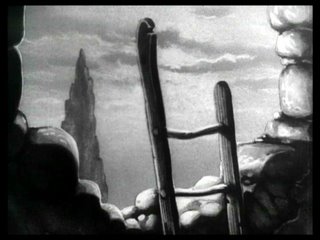
 The next day, his dog tries to wake him up, but his efforts are vain: the boy will never wake up anymore, now he's peacefully living up in Heaven, and though as sad as this can look, the innocent smile on his face tells us that now he's finally found the happiness that he couldn't find on Earth.
The next day, his dog tries to wake him up, but his efforts are vain: the boy will never wake up anymore, now he's peacefully living up in Heaven, and though as sad as this can look, the innocent smile on his face tells us that now he's finally found the happiness that he couldn't find on Earth.
 The end!
The end!
Brought to you by
mmm...donuts
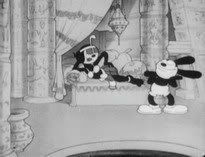

11 Comments:
That was pretty sad. Did the director based this film on The Little Match Girl (the story, not the cartoon)or is this a coincidence(sic)?
7:48 pm
I'm not sure if the director explicitly stated to have based the cartoon upon "The Little Match Girl". I'm quite sure though that the classic Andersen story had a big influence on the development of the story and the main character.
8:00 pm
I wish someone put this on youtube...
9:02 pm
Marvellous post!
Keep up the great work!
More of this kind, please!!!!
10:27 am
Mind-blowing, mr. donuts. THANKS so much for sharing. There must be so many non-US-produced cartoons out there awaiting rediscovery.
Keep up the good work, the both of youse!
11:58 am
Aside from the story similarity to "Match Girl" the drawing style is also similar to some of the Columbia work of the late 1930s (as well as some of the Lantz studio's output at that time). Since Guido and his animators would have lost access to new animation from the U.S. studios around 1940 or so, it's not surprising to see this cartoon reflect the "look" of Hollywood's pre-World War II animation.
12:26 pm
Another excellent cartoon picture post, Andrea! This foreign cartoon looks particularly well-done, with detailed backgrounds reminiscent of the Fleischer Studio. Thanks for sharing this with us. It's not something I think I'd stumble upon in my daily routine.
4:53 pm
Being reminded of reading about this film in Bendazzi's book sometime ago, but only getting one screengrab of the cartoon in it (and not much to spoil me with). Now I wish I could see this too!
4:58 pm
Hi Andrea.
Levi! It's always interesting for me interesting to see animation from another country. This is a real neat thing to see
9:58 pm
Nice blog you have. Recently I created a site about bar stool and would love you to take a look to see what you think
10:13 pm
Hi, I am Nikita. I work with ANIMATION REPORTER in INDIA. We are doing a series on classic animators. Our last issue we carried a story on Emile Cohl.
I enjoyed reading this piece. Will lookout for more.
8:39 am
Post a Comment
<< Home